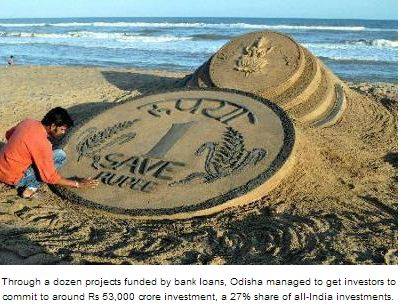Affordable homes the best investment option
In present location issue is keeping the buyers away; but better ROI, an incentive, benefits of tax breaks are still attracting the investors as well as end users towards the real estate market. In India, affordable segment are finding buyers but most are investors not those who are planning to stay in those homes because of the location issue as the home is located too far away from offices and have little support infrastructure, analysts and trade experts said. Peoples are making the attempt to invest in real estate sector because government have increase the accessibility of housing through tax breaks and other incentives or benefits, which are therefore going towards those more interested in turning a profit.
Almost 50 per cent of the total housing stock of 293 million sq. ft sold in the last fiscal year, which was ended on March 2014 and the prices of those property was less than Rs.50 lakh, as per the data of real estate research firm Liases Foras. Flats which cost Rs.25-50 lakh accounted for 37 per cent of the total housing stock sold in the same period, while those below Rs.25 lakh had a 13 per cent share. Mumbai is the city which known for its high property prices as well as ROI, accounted for 13 per cent of the sale of houses priced below Rs.25 lakh and 28 per cent of houses in the Rs.25-50 lakh range. According to Pankaj Kapoor, The Managing Director of Liases Foras, “Most new launches in the last three quarters are in the affordable category”. The more he added that the rise in sales in part to state government regulations which have been favorable for both real estate developers and buyers in the relatively more affordable segment.
In December 2014, the Apex Bank (Reserve Bank of India) allowed real estate developers and housing finance companies to raise up-to $1 billion through external commercial borrowings to promote housing projects, which also referred to as low-cost because they are cheaper than more upscale properties. The budget of 2013, proposed a Rs.2.5 lakh deduction on the total taxable income on home loans of less than Rs.25 lakh, applicable to loans from banks and non-banking financial companies (NBFCs). Such housing projects are profitable business for real estate developers as in Mumbai, they provides an internal rate of return (IRR) of 45 per cent with gross margin of 24 per cent. According to report of Monitor Deloitte in 2010, a consulting firm, “Most of the flats are being bought by investors rather than genuine low-income end-users despite the low prices and interest rates, since these flats are being built in far-flung places with poor connectivity and social infrastructure, real estate and analysts”.
For example, If person buys such a home in Karjat, which is one of the last stops on Mumbai’s suburban Central line, will have to travel about 85 km if his/her office is in the central business district of Nariman Point. That’s about two hours by train each way. According to Kapoor, “Trans Harbour Link have easy connectivity between the the mainland and the island city and provided a much-needed boost for affordable housing”. The Trans Harbour Link have 22 km road across the sea which will connect the island city and Navi Mumbai. It is expected that, Trans Harbour Link will be operational by 2018-19. Now investors are looking to it as excellent opportunity as it has connectivity and support of infrastructure. According to Om Ahuja, the chief executive, “Most projects are not affordable in terms of living and these projects are bought by investors who park their money. If it is a wrong product, their investment gets stuck”.
According to Brotin Banerjee, MD and CEO of Tata Housing, “Tata Housing sells these homes under two different national banners; Shubh Griha (Rs.4-13 lakh) and New Haven (Rs.25-40 lakh). It plans to launch more affordable projects across different consumer segments in Mumbai, Bangalore, Gurgaon, Bhubaneswar and Kolkata.” VBHC (Value and Budget Housing Corp.), has many affordable housing projects, which are in Delhi, Chennai, Mumbai and two in Bangalore. It’s planning to launch one more in Delhi and Mumbai in the next few months, according to Vivin Mathew, chief executive, western region. On March 2014, GPL (Mumbai-based Godrej Properties Ltd), the realty arm of the Godrej group, launched an affordable housing scheme at its Godrej Garden City township project in Ahmedabad. In real estate market some of the real estate developers are using finance and marketing techniques to attract genuine home buyers or investors in the Rs.6-25 lakh range.
Poddar Developers Ltd, a Mumbai based real estate developer has 25 per cent of the apartments in one of its project to families availing loans from NBFCs such as Gruh Finance Ltd, Mahindra and Mahindra Financial Services Ltd and Muthoot Fincorp Ltd. NBFCs offer rates that are slightly higher than that of commercial banks, but have an easier documentation process, making it a better option for low-income borrowers. According to Rohit Poddar, MD of Poddar Developers Ltd., “We don’t sell more than one flat to a single buyer. We have a 75:25 mix of actual home buyers and investors”. In last two years, Poddar Developers has sold more than 2,500 apartments in Badlapur in Thane district and Karjat in Raigad district, in the range of Rs.3.5-12 lakh each. Recently they have launched the similar project at Atgaon in Thane and is planning 40,000 sq. ft of land by the end of this financial year.
According to Rashmi Housing Pvt. Ltd, “It’s also giving a loan to home buyers without interest to drum up interest in homes that cost below Rs.25 lakh. According to Yogesh Bosmiya, Director of Rashmi Housing, “Around 30 per cent of our home buyers or invetors they are availing this loan facility and we are mostly getting the end users”. Rashmi Housing Pvt. Ltd, said that they has sold more than 3,000 units in the Mira-Bhayander area of Thane district since 1999 and is developing another 4,000 units in the same area. Bosmiya said the profit margin is 20-25 per cent. Whereas; some of the real estate developers are constructing the hospitals and schools to improve the existing public schools, to create social infrastructure in a bid to attract families.





I completely agree with you Admin. Yes, the best investment option would be investing on affordable homes instead of investing in gold. At the same time people are not ready to stay at their purchased new house as it is very far for their office location as well as there is a lag to provide the better infrastructures like good road, transportation facilities etc which matters.